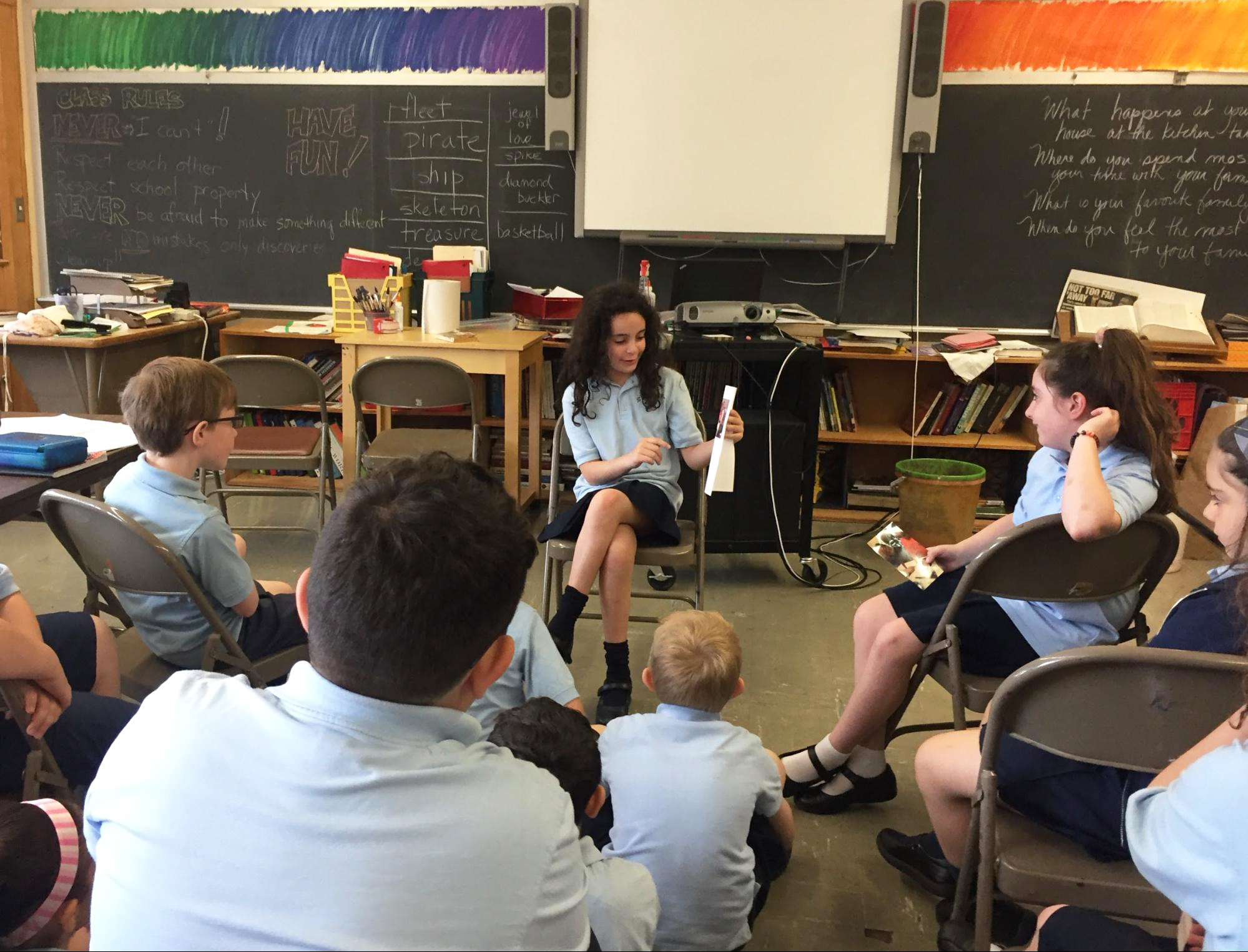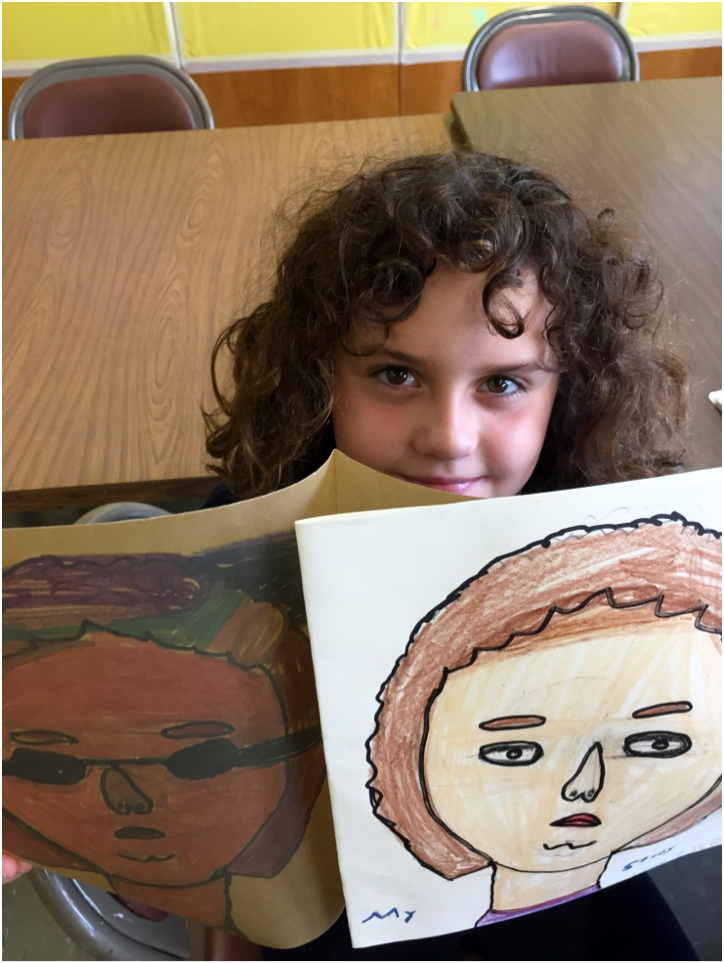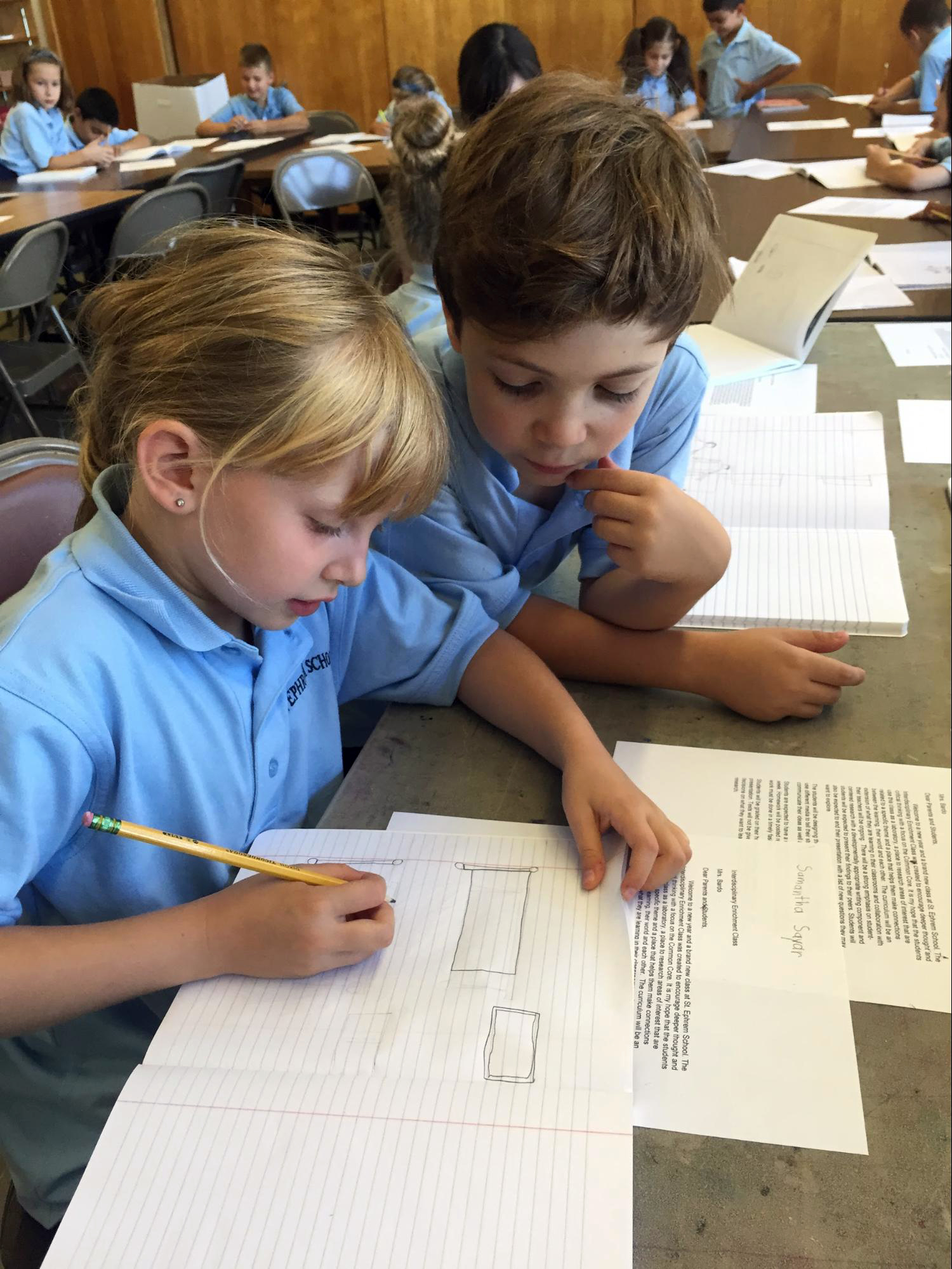
Third grader discussing her photo inspired by Carrie Mae Weems’ Kitchen Table Series. Courtesy of the author.
My classroom is a semblance of organized chaos; I enjoy the energy of a busy, vocal classroom. Numerous teaching styles and classroom cultures exist, but I believe that their goals should be the expression of our students’ ideas as well as creating a place to learn.
We live in an age of chaotic discourse, and expressions of speech are being stifled, twisted, and maligned. It is especially troubling that we seem to be creating spaces that only allow for one, dominant point of view. The situation prompts me to ask: How do we as educators create safe places for our students to express themselves? How do we encourage active listening? How does this lead us toward more empathetic relationships? How can art begin or encourage a deeper discourse?
For seven years, I have been teaching an enrichment class as a complement to the school curriculum. The class was designed to create a space for students to research their interests and share their findings with each other. Each lesson includes an art component as a way to communicate ideas and to allow for expression and exploration. I have found that when students have room to inquire and are exposed to the ideas behind contemporary art, they find new ways of making connections and expressing themselves.
The theme for my third-grade enrichment class is “Home”; the students’ research was centered on facets of their community: themselves, their family, and their friends. Below are some lessons from the unit.
“The Book of Me”: A Focus on Self
Students created nonfiction and fiction books based on their real-life experiences. These books were collections of stories, mementos, and descriptions of who they are and gave us a glimpse into the many complexities of each person. Pursuing the concept further, the students included their classmates in their stories.
“Kitchen Table Series”: A Focus on Family
Viewing the work of Carrie Mae Weems gave the students a chance to understand photography as an art form and a medium that is often specifically used for storytelling. Based on the artist’s Kitchen Table Series, the students used the camera to position themselves as both artist and subject in images that tell the viewer about their lives. Explaining their photos to the entire class, all of the students spoke about different facets of their lives and opened up themselves and each other to a rich conversation triggered by their images. We learned about the things they loved, what frustrated them, how they spent time alone, and the relationships between themselves and their families.

3rd grade exploration of self: cover photo is an alter ego, inside cover is drawing from life. Book includes stories real and imagined, memories and pictures. Courtesy of the author.
“Illustrating Life”: A Focus on Friendship
I began the year with this lesson as a way to encourage students to listen to each other. Students viewed a segment of New York Close Up, “Brian Zanisnik and Eric Winkler’s Animated Conversation.” I focused on a segment of the video in which both artists speak fondly of their mothers. Zanisnik is an animated storyteller, and Winkler listens to his stories and uses them as inspiration for his drawings and animations. They are deeply connected to each other through their friendship, and the students responded to their connection and stories. After viewing the video, each student described an important story in their life to the person next to them. They took turns intently listening to each other’s stories, taking notes, and then illustrating what they heard.
Through the activities of the “Home” enrichment class, an exploration of self and surroundings, the students were able to form deeper understandings of each other that led to some introspective conversations and opportunities for each student’s story to be told.




